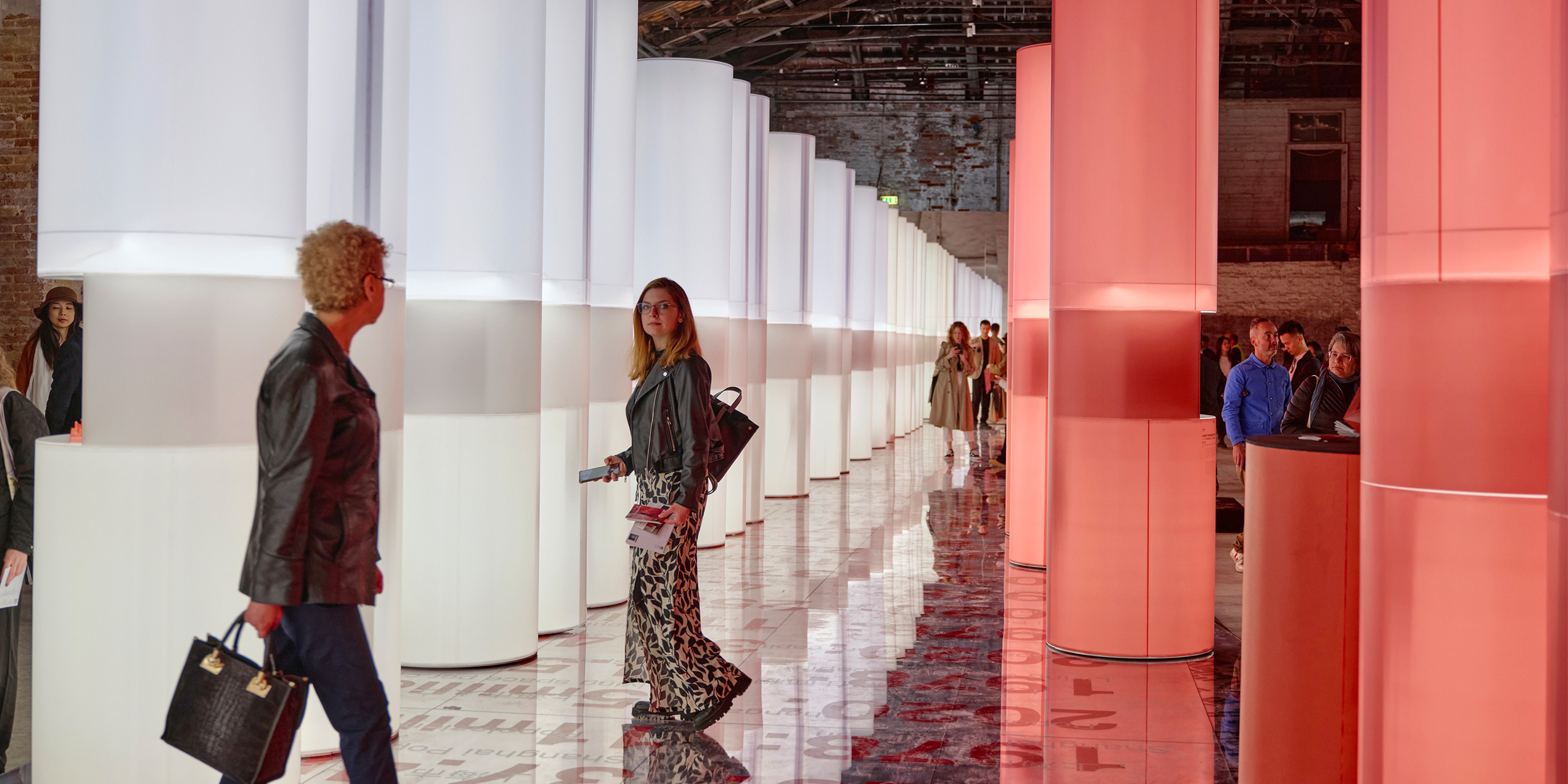
On the afternoon of May 19th Venice local time, The Premiere and the Curator’s Guided Tour of the China Pavilion at the 18th International Architecture Exhibition of La Biennale di Venezia (hereafter referred to as “the Biennale”) –was successfully held. The event boasted a stunning attendance from the fields of academia, architectural practice, arts and educational sectors. The event was moderated by Luo Peng, Director of the International Affairs Division of Shanghai Jiao Tong University.
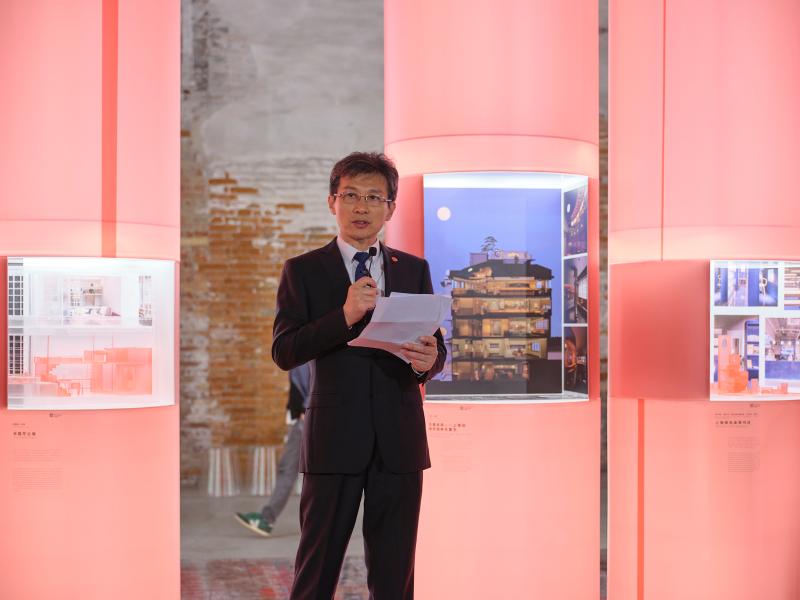
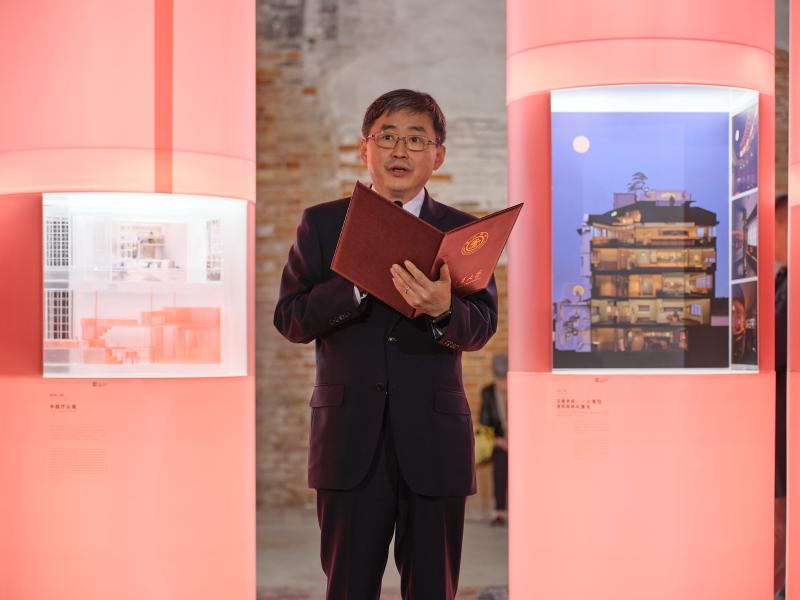
Ding Kuiling President of Shanghai Jiao Tong University and Academician of the Chinese Academy of Sciences, on behalf of the University, expressed his sincere congratulations for the opening of the event. Historically, Shanghai Jiao Tong University and the Biennale share a similar timeline. The China Pavilion focuses on the sustainable development of urban and rural areas. From the perspective of cities, nature and people, it tells Chinese stories and shows a Chinese style of life. It realizes the opportunity to strengthen international exchange and cooperation, and contributes to a “Shanghai Jiao Tong solution” to the promotion of global exchange and mutual learning.

Lin Zhongqin, Former President of Shanghai Jiao Tong University and Academician of the Chinese Academy of Engineering, fully commended the wisdom and effort Ruan Xing and his team have devoted to the China Pavilion. He was touched and proud that Scholars and practitioners from Shanghai Jiao Tong University represented Chinese architects at this top international platform, sharing the unique stories of Chinese urban development through exquisite ideas and vivid formats.

The curator Ruan Xing, Dean of the School of Design, Shanghai Jiao Tong University briefly introduced the curatorial concept. Around the theme of “Renewal: A Symbiotic Narrative”, at the China Pavilion, a total of 49 works were exhibited in the form of scroll-like columns, referencing the Chinese-style of reading. Through the prism of the changing built world in the past 40 years, they tell of China’s unique symbiotic renewal of life, architecture, city, and nature.
Lastly, the event came to an end with Lin Zhongqin announcing the exciting official start of the Curator’s Tour of the China Pavilion.

Invited guests included Tiziana Lippiello, Rector of Università IUAV di Venezia, Angelo Maggi, Vice Rector of Università IUAV di Venezia, Ilaria Valente, Vice Rector of the Politecnico di Milano, Jean-Louis Cohen, Sheldon H. Solow Chair Professor of Architectural History of New York University, Sarah Whiting, Dean of the Harvard School of Design, Paolo Mellano, Dean of the Department of Architecture and Design of Politecnico di Torino, Huo Qigang, deputy of the National People's Congress, Shen Lidong, President of Archplus Group Co., Ltd., Shi Jiahonghua, Deputy Mayor of Suzhou, Xin Guoliang, Secretary General of Shanghai Survey and Design Industry Association, Zhu Xiangming, Vice Chair of the Shanghai Survey and Design Industry Association, He Ying, Executive President of Guangdong Dongpeng Holdings Co., Ltd., Xu Qianli, Chairman of Chongqing Design Group Co., Ltd., Ye Ting, Managing Director of West Bund Huazhimen, Lin Zhiming, President of bpi Lighting Design Company, Fan Liqiang, founder of Shanhui Art Community, Zhang Tong, Dean of School of Architecture, Southeast University, Li Xiangning, Dean of the School of Architecture and Urban Planning, Tongji University, Du Chunlan, Dean of the School of Architecture and Planning, Chongqing University, Zeng Chenggang, Dean of Shanghai Academy of Fine Arts, Shanghai University, Yao Ji, Chairperson of Archplus Co., Ltd. Design Institute, Yao Jun, Chief Executive of Archplus Co., Ltd. Design Institute, Yi Zhaojun, Operation Director of Shanghai Design Week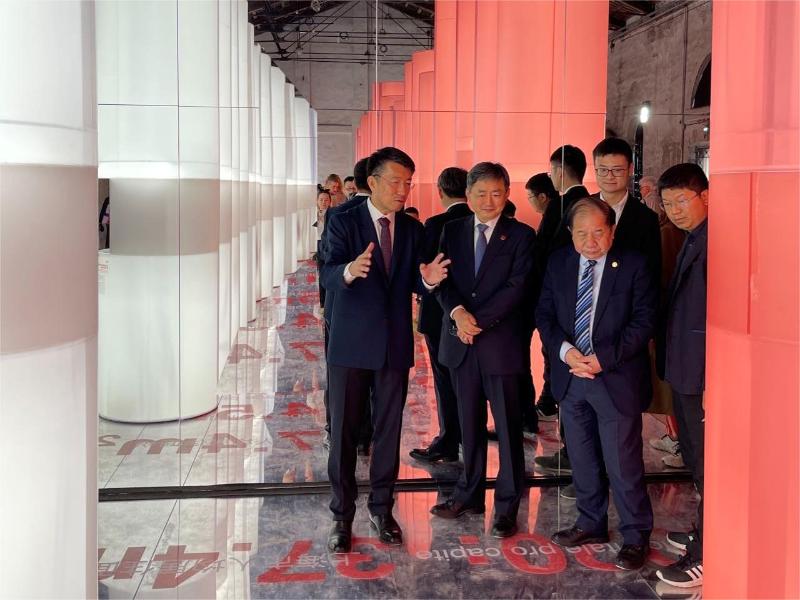
Visitors from all over the world came to watch the exhibition, including Huo Qigang, deputy to the National People’s Congress and Vice Chair of the China Youth Federation, Guo Jingjing, Olympic champion, Patrik Shumacher, chief architect of Zaha Hadid Architects, and Bjarke Ingels, founder of BIG Architects. In the exhibit, a colonnade was formed by more than 50 huge scroll-like columns. Walking through them evokes the sensation of wandering in a metropolis. Through “viewing”, “unfolding”, “contemplating”, and “strolling”, visitors search for answers to the problems of our time and imagine the future.
Curatorial Concept of the China Pavilion
The Venice Biennale originated in 1895 and is one of the most influential contemporary art exhibitions in the world today. The Biennale Architettura will also feature, as usual, the National Participations, with each country presenting its own exhibition in the Pavilions of the Giardini and the Arsenale, and in the historic center of Venice.
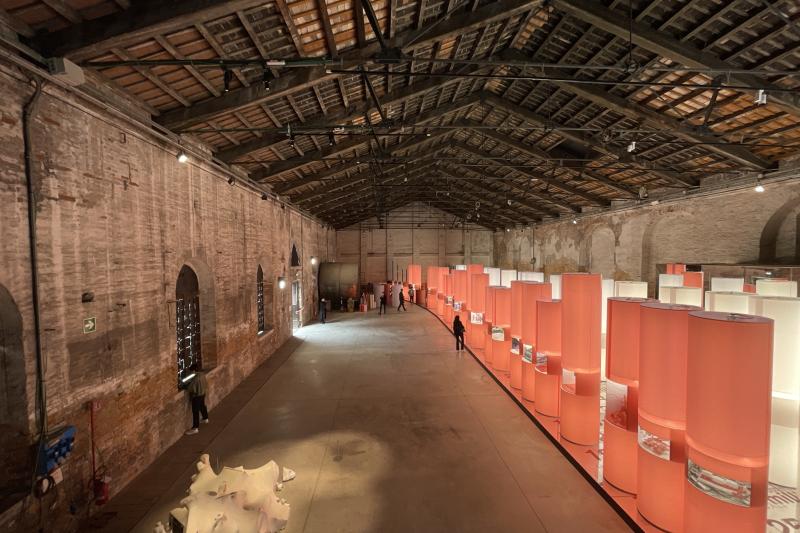
What does “renewal” mean in the Chinese cultural context and discourse? It is a state of mind. First and foremost, change is constant; at the same time China’s cultural tradition provides change with a condition of continuity. This is “change within the unchanged”. As a wise Belgium scholar observed, the conundrum is like a waterfall – a favourite theme of Chinese landscape painting, it seems static as a piece of rock when viewed from afar, yet upon close scrutiny is spectacularly dynamic…The very existence of a waterfall is a sign of a healthy ecology, which from the vantage point of biology is marked by “symbiosis”. In building their habitat, the Chinese are accustomed to “renewal”. They usually pay very little heed to gestures of permanence.
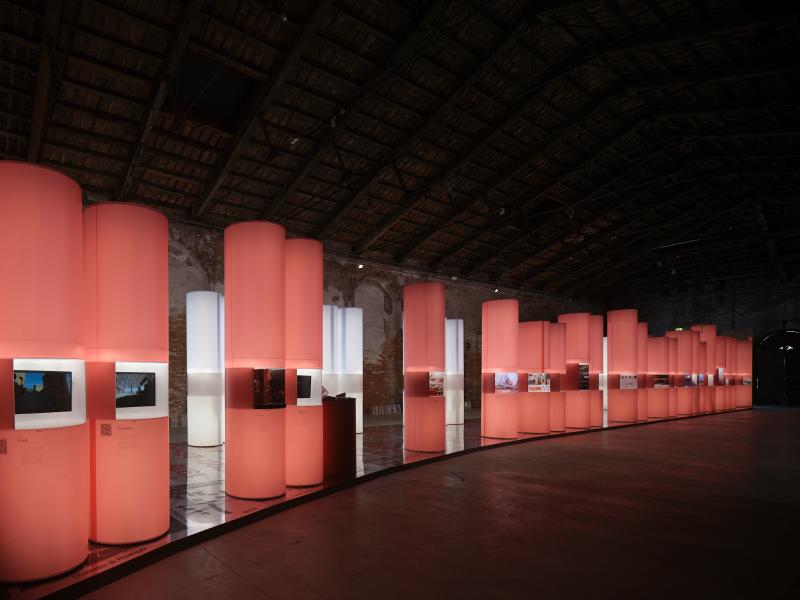
With the theme of “Renewal: A Symbiotic Narrative”, the exhibition plan of the China National Pavilion developed around three chapters: “DENSITY wonder Portraits of Plurality”, “LIVEABILITY renewal Stories of Shanghai” and “SYMBIOSIS future Rejuvenation”.
The first chapter “LIVEABILITY_wonder: Portraits of Plurality”, shows that ubiquitous concentrations of different people stimulate highly dynamic dwellings, daily social interactions, and cultural life. The interdependence of city and people can be shown by sensational urban scenes such as trams travelling through buildings, and the juxtapositions and evolution of urban vitality. The symbiosis between people and nature creates reimagined rural life, while reshaping the sense of “home”. In the second chapter “LIVEABILITY_renewal: Stories of Shanghai”, livability miraculously emerges from everyday urbanism, and from areas where diversity flourishes. The vivid life vignettes of Shanghai can be depicted by “knots, lines and interfaces”. The third chapter is “SYMBIOSIS_ future: Rejuvenation”, showing as China’s urbanization matures with more refined urban governance and design, and the built environment continues to be rendered more liveable and sustainable, we may usher in a future of ecological rejuvenation. With technological innovation in clean energy, electric cars and cities, virtual reality, and more, changes in the built environment could resonate with a rejuvenated urban ecology in post-industrial cities, leading to a symbiotic balance between city and nature. The outdoor installation adopts a “mathematical model” to raise questions about the differences in land use efficiency and livability between courtyards and towers.
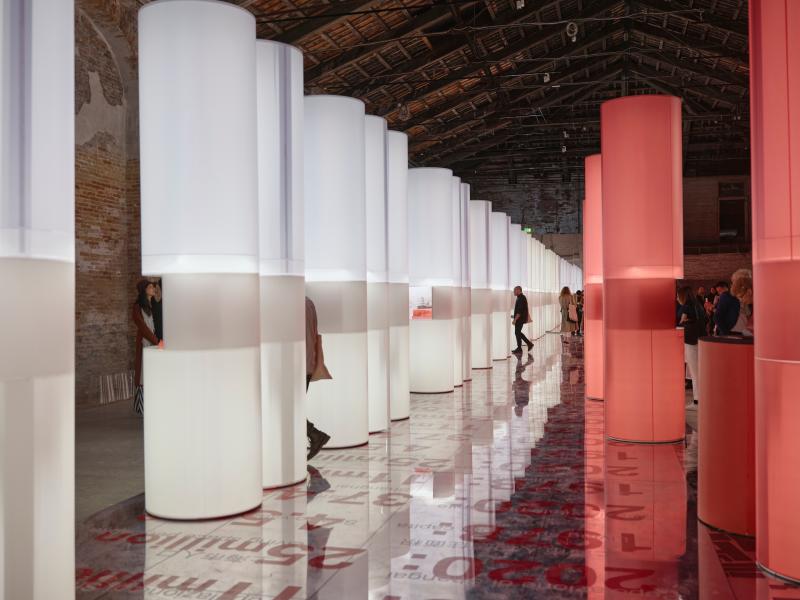
Since China’s reform and opening up, the urban population in Shanghai exploded, increasing from 11 million to 25 million, while per capita living space also jumped from 4.5 to 37.4 square meters, marking an incredible change. On a micro level, in terms of daily life, Shanghai’s cities and buildings reflect the pursuit of livability, leisure and an exquisite life. Putting these two sides together forms a very interesting Chinese story. Change is constant; at the same time China’s cultural tradition provides change with a condition of continuity. This is what we say “change within the unchanged”.
Source: School of Design
Editor on Duty: Diwei Chen
Responsible Editor: Qianqian Jiang, Yuhe Fu

